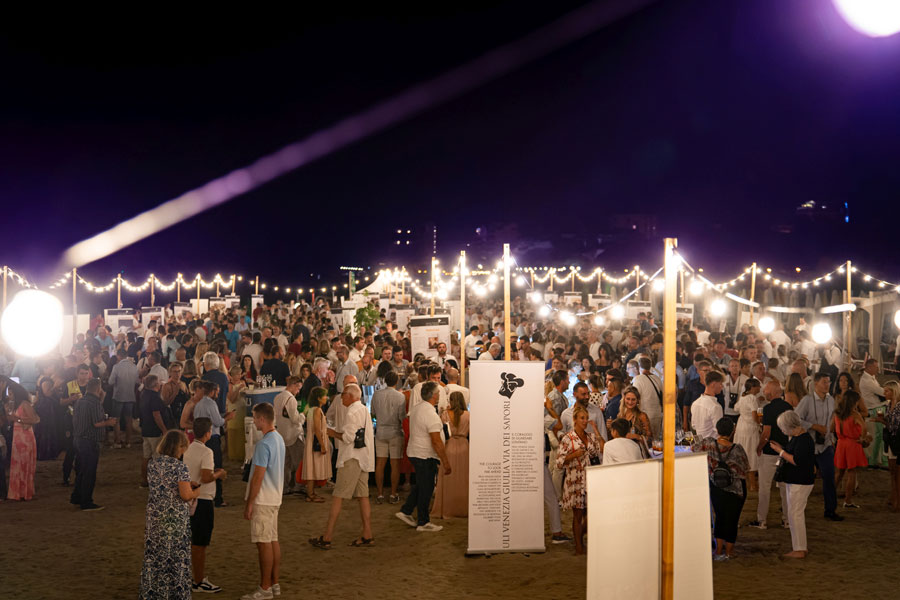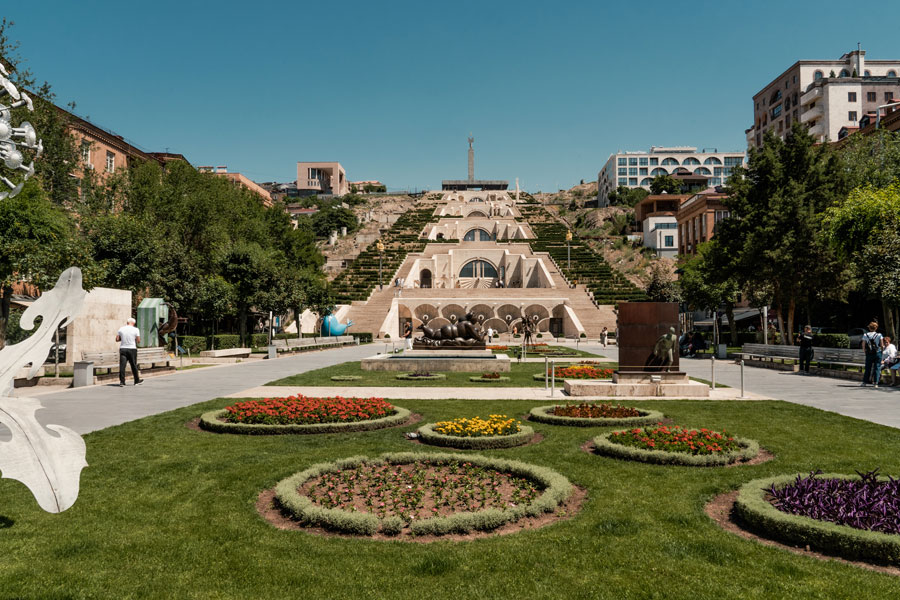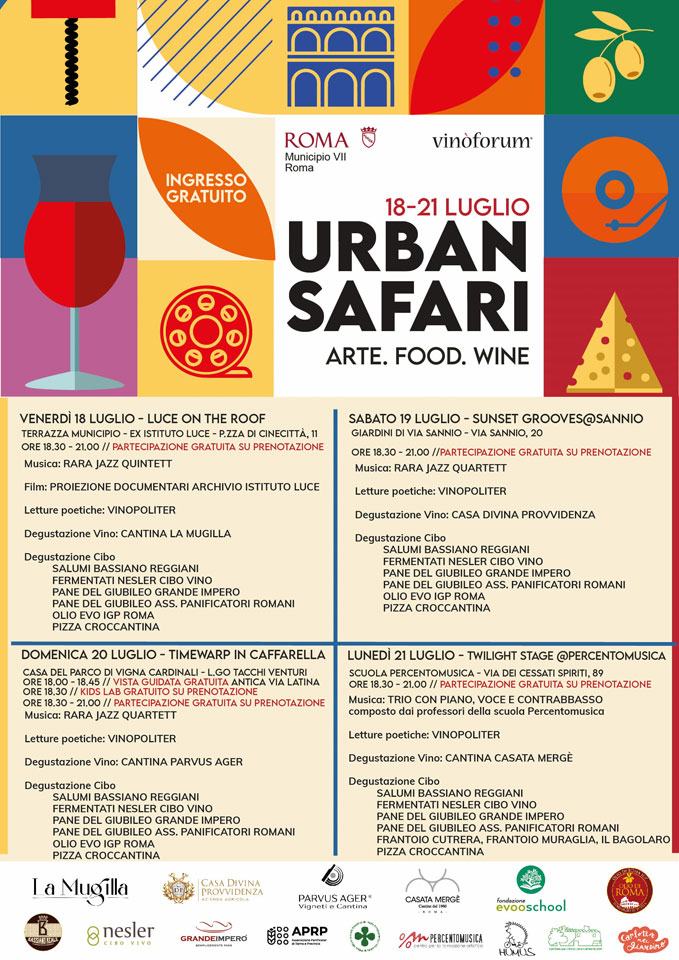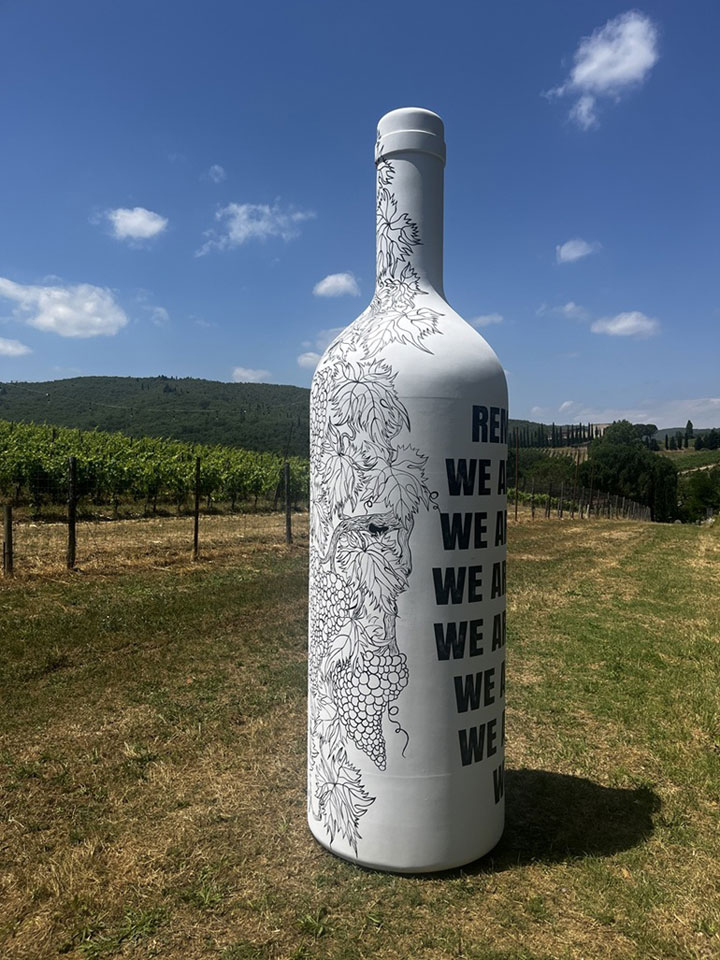Grado “On The Beach”, on the beach at sunset, barefoot in the sand or in sandals, to enjoy the most sophisticated summer cuisine.
The date is July 29th , when the highly anticipated and now traditional event of taste, style, and social life on the Grado summer calendar will take place: the Dinner Show by Friuli Venezia Giulia Via dei Sapori , the renowned group of 25 restaurant stars who present the finest Friuli Venezia Giulia cuisine in highly evocative locations. Their third Dinner Show 2025 will be held on the main beach of the GIT , by the sea, in a glamorous and elegantly informal atmosphere.
It will be a 23-stage dinner show celebrating summer cuisine, with its flavors and aromas, freely interpreted by the chefs of the group’s restaurants , who will cook highly creative dishes created specifically for the evening live in front of the audience. Alongside them, winemakers from Friuli’s most prestigious wineries will suggest the perfect food and wine pairing. Performing will be chefs from Ai Fiori in Trieste, Al Gallo in Pordenone, Al Grop in Tavagnacco, Al Paradiso in Pocenia, Al Ponte in Gradisca d’Isonzo, Alla Luna in Gorizia, All’Androna in Grado, Caffetteria Torinese in Palmanova, Costantini in Collalto di Tarcento, Da Alvise in Sutrio, Da Nando in Mortegliano, Enoteca in Buttrio , La Torre in Spilimbergo, Le Fucine Gourmet in Buttrio, Lokanda Devetak in Savogna d’Isonzo, Mandi Parentesi Friulana in Lignano Sabbiadoro, San Michele in Fagagna, Tre Merli in Trieste, and Vitello d’Oro in Udine. They will also be joined by chefs from Motus Contemporary Bistrot in Grado, Raviolo Factory in Villa Santina, and Ristorante Prosciutterie IE dal 1988 in San Daniele.
The opening – as well as the closing with desserts, ice creams, coffee and spirits – will be entrusted to the artisans of taste , top-level agri-food producers, who for 25 years have been united with restaurateurs and winemakers around the same project: the valorization of the food, products and territory of Friuli Venezia Giulia.
The dinner show will begin at 7:30 pm. The price is €90. Tickets can be purchased at the group’s restaurants and from the consortium office (info@friuliviadeisapori.it, tel. +39 0432 530052, Monday to Friday, 9:00 am to 12:00 pm). In case of inclement weather, the dinner will be held on July 30th. Parking: Via Vespucci and Viale del Sole.
Friuli Venezia Giulia Via dei Sapori is a close-knit group of 72 top-quality businesses: 25 restaurateurs —from the Adriatic Sea to the Alps—who champion the many facets of regional cuisine, each conceived and reimagined according to their own unique approach; 24 winemakers and distillers ; and 16 artisans of taste , supported by 7 technical partners . Over a million tastings served, showcasing excellence and the region’s rich heritage, 185 events in 83 locations around the world promoting Friuli Venezia Giulia’s food and wine culture, over 2,000 recipes created to delight audiences with unique dishes that recount the region’s culinary history in a unique way, more than 35,000 bottles opened, and 1,383 times winemakers, artisans of taste, and partners have appeared on menus, making every experience unique: these numbers summarize the consortium’s flagship product of regional excellence in food and wine.





